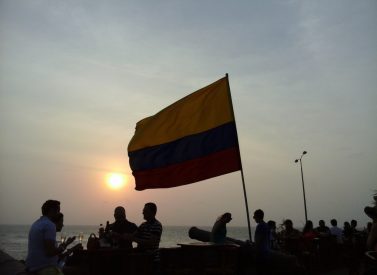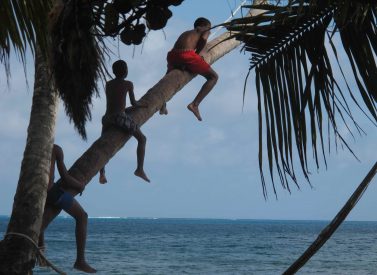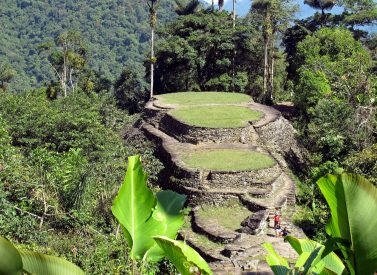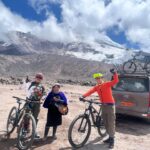
Colombia’s Southern Highlights Tour
Explore Colombia’s Southern highlights, Bogota, Tatacoa Desert and San Agustin.
You start your tour in Colombia’s vibrant capital, Bogota, visiting markets, the famous Gold Museum and more.
Next we head to enjoy the incredible colours and stars in the Tatacoa desert. Sunrise is the best time to enjoy the ochre and contrasting grey hues of this incredible landscape.
At night, with clear skies, you’ll enjoy an explosion of stars and have a clear view of the Milky Way.
Explore Colombia’s Southern highlights, from Bogota to the Tatacoa Desert to the archaeological wonders of San Agustin.
You start your tour in Colombia’s vibrant capital, Bogota, visiting markets, the famous Gold Museum and more.
Next we head to enjoy the incredible colours and stars in the Tatacoa desert. Sunrise is the best time to enjoy the ochre and contrasting grey hues of this incredible landscape.
At night, with clear skies, you’ll enjoy an explosion of stars and have a clear view of the Milky Way.
More on Bogota, Tatacoa and San Agustin
San Agustin’s hills are verdant and full of coffee plantations and fruit trees, with the smell of sugar cane production weighty in the crisp air.
We you from one archaeological wonder to another: El Purutal, La Tablón and La Chaquira.
The parks Parque Arqueológico, Alto de los Idolos and Alto de la Guacas showcase giant ancient sculptures up to seven metres tall, some very humanlike, others rather monstrous.
Our tailor made tours are completely flexible and you can easily extend and combine this tour with other South America holidays.
Head to the white city of Popayan, explore the Caribbean coast or trek in the coffee region or the Lost City.
Trip Highlights
Print Share Download as PDF-
Enjoy the best of Bogota - visit the Gold Museum, old town and more.
-
See magnificent colours of the Tatacoa Desert at sunrise and beautiful stars during clear nights.
-
Visit archaeological wonders of San Agustin and Los Idolos, huge stone formations in the countryside.
-
Fully guided tour with expert guides to help you get the most from the trip.
Probably the hottest place I've ever been, but, wow, what a guided tour in the morning.
The rock, mud and canyons change colours around you as the sun comes up. At night time, I've never seen such a clear Milky Way, probably only rivalled by when I saw it at Atacama in Chile.
T. Shearman, Tatacoa
Full Itinerary
Day 1: Land Bogota, transfer to hotel
Arrive Bogota.
Met on arrival and transfer in (30 mins) to your hotel in the Candelaria district of Bogota.
Take it slowly on arrival, as Bogota sits at 2,640m/8,661ft above sea level.
La Candelaria is the main attraction for most, with its colourful winding streets, coffee shops and artisanal stores.
The Gold Museum (Muséo de Oro) houses one of the world’s most important and impressive collections of pre-Colombia work – a must-see among the many excellent museums here.
Bogotá’s culinary reputation is growing, too, as international cuisine and local chefs combine the spectacular varieties of fruits and vegetables Colombia offers.
Culturally you will find good live music, excellent exhibitions and very hospitable people.
Day 2: Paloquemao market, Gold Museum, Botero Museum, Plaza de Bolivar and La Candelaria walking tour, hotel (B,L)
We go up at the start – the mountain sanctuary of Cerro Monserrate (3,152m/10,341ft).
Monserrate peers over the sprawling metropolis that is Bogota from its Cordillera Oriental (East) perch. We use a cable car to journey up to the panoramic views.
We visit the Basilica of Our Fallen Lord Monserrate, then use the railways again to descend to La Candelaria. This is Bogota’s famous colonial centre, very well-preserved and full of life, sounds and smells.
The streets are narrow but cars, buses and occasional donkeys shimmy alongside pedestrians beneath beautifully ornate wooden balconies and some brightly painted houses.
We take in the Botero Museum (http://www.banrepcultural.org/bogota/museo-botero) which houses pieces by Picasso, Renoir, Dali, Monet, Matisse and Degas as well as Colombia’s incredible Botero.
Then, Bogota’s renowned Gold Museum. Those with a specific interest may wish to allocate a whole day to see this enormous collection of more than 35,000 pieces, the largest collection of pre-Columbian gold in the world.
There are themed rooms and much to read and see, plus some interactive rooms to bring the history to life.
We end the tour in Plaza de Bolivar, Bogota’s main square, named after Simón Boilvar, central to the revolution and liberation of the Southern Americas.
You can visit the house museum of the ‘Flower Seller’ and see a broken vase that sparked the revolution and the independence of Colombia from the Spanish crown.
The rest of the day you’re free to explore at leisure and pick from a wide variety of local restaurants for dinner.
Day 3: Transfer to airport, fly to Neiva, transfer to Tatacoa desert, hotel (B)
We drive you to Bogota airport (30 minutes) and it’s a short flight (45 minutes) to Neiva. There, you are met and it’s a 90-minute drive from Neiva to Tatacoa, and the temperature rises as we approach the desert.
It can rain here and is probably best described as a semi-dry desert area, formed when an old, dried up lake. There are many fossils here.
There is a red and a grey zone of rock formations, with many birds, cactus and plants to enjoy, brought alive by a local guide who knows the history and uses of many of the native plants.
We arrive at our hotel, the best in the area, and relax during the heat of the day. At night, gaze at the fantastic stars above.
Day 4: Morning walking tour, optional star gazing at night, hotel (B)
We’re up early, before the sun comes up and makes walking too uncomfortable. After 10am, temperatures can soar above 40 degrees celcius.
It can be a 05.00 start as we head to the red zone, replete with beautiful colours and shapes. Keep taking pictures as the light changes and you won’t be disappointed with how they come out.
The grey zone is other worldly, with mysterious shapes and a moonscape feel.
There are a couple of shops to buy cacti products – wine and sweets the main attractions – and in the evening, you can stargaze at the observatory, and try to go when there is a half moon or less.
Your hotel has a pool for you to relax in as the temperatures climb.
Tatacoa Desert
This immense desert stretches for more 330km2.
This is hot, dry Huila territory, caused no doubt by a ‘rain-shadow’ effect as it lies between two very wet, humid and jungle covered cordilleras. It is a rare sight to behold.
Comprising of 3 main sectors where colours of the soil change from a rusty red to a greyish sand, Tatacoa draws people to its rare and strange geological formations. Dry, cracked and quite stunning hills and mounds dominate the scenery, with weathered rock and soil pillars enticing the visitor to explore further in the 40+deg. heat.
Such a site, like most deserts, is a diggers dream and nearbyy in Villavieja there is a paleontological museum that holds over 550 fossils varying from a Miocene era Monkey to reptiles to amphibians, dating back over 25 million years.
Star gazing in the Tatacoa is a great unique experience, too. A near total lack of light pollution, proximity to the equator and near zero humidity, makes this desert one of the best sites from which to view stars in Latin America.
Day 5: Transfer via Timana to San Agustin, hotel (B)
It’s a long drive today – five hours – but we go through some stunning scenery to get to San Agustin, making stops en route.
We stop off in Timana to learn about the legendary and vengeful ‘Gaitana’. This lady is said to have never submitted to the Spanish Conquest and was immortalised in the stories of the age.
A statue in this small town is dedicated to her memory. Here you can buy and try some typical ‘Achiras’, a local and delicious cheesy snack.
La Gaitana
Pedro de Añasco was a legendary Spanish Conquistador commissioned by Sebastian Belalcazar (founder of Quito, Popayan, Cali, Guayaquil) to found the town of Timana.
When in the region of Timana, de Anasco asked a number of chieftains from local villages – in this case ‘Yalcon’ indigenous group – to meet with him to discuss how this was to be.
The local chieftain refused, apparently on the orders of his mother. For this, the chieftan was executed, tied and burned to a stake. The mother pleaded for mercy, but Anasco enforced the act of savagery anyway, as a way to put the rest of the village in line.
The dead chieftan’s mother, later called ‘Cacique Gaitana’ or Chieftain Gaitana, took her revenge.
She surprised Anasco during the night, taking him hostage and promptly pulling out his eyes. A cord was then stuck through the bottom of his jaw and thread out of his mouth. Using this the Cacica Gaitana dragged his her son’s killer, still alive of course, through a number of villages to show what had become of this Spanish Conquistador.
After dragging him through a number of sites he was then picked apart until dead and his head turned into a recipient from which to drink from. His body was stuffed with ash and displayed while his flesh used in a great feast to celebrate the Spanish’s loss.
The Cacica Gaitana continued this rebellion in the region, forming groups of up to 15,000 warriors from neighbouring clans to fight the Spanish. However, each time they lost battles, rumoured to be because of betrayal within the ranks.
The Spanish came to a point where they almost ordered a retreat, but reinforcements came in time and the rebellion was crushed.
Out of 15,000 indigenous people that lived in Timana, only 600 survived the purges of war, foreign disease and slavery.
A statue can be found in Timana dedicated to the ‘Gaitana
San Agustin arrival
We arrive at your hotel, and you have the afternoon free to go for a walk through the town of San Agustin or some of the quiet roads that surround.
The hills are verdant and full of coffee plantations, sugar cane (plus sugar factories, where they make panela), bananas, fruits and trees. You can see locals working the lands, too, and the smell of sugar cane production weighs on the crisp air.
Warm by day and pleasant at night, so you can sleep well after the heat of the desert.
Day 6: AM: San Agustin Archaeological Park. PM: El Tablon tour, hotel (B)
San Agustin is located high in the Colombian Massif, where Central and Eastern Andean chains are still joined before splitting as they head north.
The rivers Cauca, Magdalena, Patia, Putumayo and Caqueta are born here, too, making this a very fertile and dramatic landscape.
San Agustin Archaeological Park is the largest complex of pre-Columbian megalithic funerary monuments, burial mounds and statues in the world.
It was created in 1931 and is home to around 200 of the 600 or so stone statues in the whole region, some as high as seven metres.
We walk around the various sites in which lie various sarcophagi and statues, built for the upper-echelons of society who are also thought to have lived there alongside.
The ‘San Agustinian’ culture took off around 100 AD. This site was a place of pilgrimage and worship for many other Colombian pre-Hispanic cultures. L
Lunch at site and return to San Agustin, with the option to walk to the site of ‘El Tablon’, 2km from the town centre.
Day 7: Visit to Isnos and to Alto de Los Idolos Archaeological Park & Alto de Las Piedras Archaeological (B)
Alto de Los Idolos is located on the bank of the relatively small Magdalena River, and the second site a little further north of here.
The entire area has evidence of ancient horse tracks, funerary monuments and mounds.
Both sites have carved hierarchic guards that stand at around 4m high along with an array of other stone monuments.
Day 8: Transfer to Pitalito airport, fly to Bogota, ends (B)
We transfer you to the airport for your flight on to Bogota.
Note: Flights from Pitalito are not daily – please check with us for dates and prices.
Prices From $2,298 / £1,868 per person
What's Included?
Hotels (including early check-in on day 1), transfers, tours and meals as listed, snacks and water on day tours, land road transport, all entrance fees to all museums, parks and reserves, local bilingual guides, snacks and water on day tours
What's Not Included?
International or internal flights (we can look for these for you), laundry, personal expenses/items, tips, visa, alcoholic or soft drinks, meals not listed, insurance.
Accommodation
Hotels and guesthouse in towns with private, ensuite bathrooms. Based on 2-3* star hotels, with upgrades available at extra cost.
Tour Staff
Local guides will accompany you on the various tours, with specialised local knowledge.
Meals
We can cater for almost all dietary requirements – please enquire for more.
The food in Colombia is excellent and you will have the opportunity to sample a number of local dishes.
Breakfasts at hotels generally feature hot drinks, teas, coffees, juices, fruits, yoghurts, cereals, eggs etc.
Activity Level
You don’t need to have a high level of fitness for the trip, but the more mobile you are, the more you will enjoy it.
You need to take it easy in Bogota because of the altitude. San Agustin and the tours move between 1,500-2,500m/4,921-8,200ft and you may feel short of breath if you move around too quickly.
The desert can be very hot (over and above 40 degrees) and so you need to drink a lot of water and move slowly.
Practical Information
Introduction to Colombia
Colombia is the country that has everything you could need from a South America holiday.
Diverse people and landscapes make this a country rich in wildlife, landscapes and culture.
Hikers can choose to trek to glaciers on snow-capped peaks, or through steamy forest to hidden ruins, or to unique Paramó plains.
Cyclists can pedal over and around the Andean peaks that dominate, and adventure seekers can try anything from paragliding to canyoning.
Beach lovers can enjoy surfing and relaxing with a Colombian twist, or head to islands for a more Caribbean vibe.
Prefer wildlife? Try the pacific coast and its whales and turtles, or perhaps the Amazon and its diverse flora and fauna.
The cities are cosmopolitan and cultured, replete with incredible museums with enormous collections.
Geography of Colombia
Colombia is divided into five main geographical regions: Pacific, Llanos, Amazon, Caribbean and Andes.
The Andes dominate and have three main branches, all running roughly from south to north.
The Cordillera Occidental lies furthest to the west, running parallel to the Pacific coast; Furthest east lies The Cordillera Oriental running almost to the whole length of the country and incorporating Bogota; and in between these two, is the Cordillera Central.
Less than 3% of the population live in two lowland areas that comprise more than half of Colombia’s overall size.
The first lies to the east of the Andes called Llanos and is a savannah, and forms a part of the Orinoco river basin.
The second is Colombia’s steamy Amazon rainforest, which lies to the far south east of the country and covers almost one third of the entire country.
In the north is the hot and humid Caribbean coast, characterised by beautiful beaches and turquoise seas as well as fertile and low-lying plains and La Guarija Desert.
Colombia lays claim to two small islands, close to Nicaragua, called San Andres and Providencia, and islands in the Pacific and these are known as the insular area.
The narrow Pacific coastal lowlands are densely covered with vegetation, with very few people living here.
Weather in Colombia
Colombia has warm to hot average temperatures all year round.
Cartagena on the Caribbean coast, for example, averages around 325 days of sunshine a year, even during its ‘winter’.
There are, however, two rainy and dry seasons that Colombians call summer and winter.
The severity and length of these seasons also depends on where you are in the country – the coast has slightly more severe and longer dry seasons than the Andean region, for example.
Dry season
Dec-March and July-early Sept.
On the coast the rainfall stays low during the whole of September.
Wet Season
April to June and October to early December.
Much depends on where you are in the country. Up in the mountains one of the great attractions of Colombia is the fact that within half and hour of travel, either losing or gaining altitude, you can emerge in a totally different climate, substantially hotter and drier, or colder and more humid, depending on where you are.
On mountain treks the temperature will decrease around 6°C for every 1,000 metre (3,300 feet) increase in altitude.
In the Paramo, temperatures average around 5ºC and drop below freezing at nighttime.
Again, variations depend on geography.
Kit list
Good kit is vital for every trip.
Book with Andean Trails and get 15% off Páramo’s fantastic ethical and high performance outdoor gear.
Overview
Bogotá is a city high in the Andes Mountains (2625 metres) and has a spring-like climate, when the weather is generally cool and variable. It can rain, the sun can shine and it can be foggy and chilly.
Bogotános like to say that in Bogotá you can experience the four seasons all in one day.
On the Carribean coast it is usually hot and humid. In general you’ll need cool clothes. The Caribbean coast of Colombia is very hot most of the time and your change in altitude during the trek isn’t a lot. Whilst you’ll be kept a little cooler by the surrounding water and dense vegetation you will be pretty hot and sweating during most if not all of the trek.
Give plenty of thought to kit selection, and try to keep weight down.
Below is a more detailed guide.
Detailed kit list
- Light weight waterproof jacket.
- 2-3 long-sleeve shirts – no cotton.
- 2-3 short-sleeve T-shirts – no cotton.
- 2 pair of hiking shorts – cotton or synthetic material (no jeans).
- 2-3 mid-weight (wool or synthetic) socks.
- 2-3 liner/thin/running socks if needed.
- Athletic-type socks, for city use.
- Light weight hiking boots that are waterproof and well broken-in, and suitable for muddy terrain.
- Training shoes / all-terrain sandals – for crossing rivers and relaxing at camp.
- Swim suit
- 1 fleece or sweat trousers (for cold evenings in Bogota).
- 1 lightweight wool sweater or windproof fleece
- 1 wool or synthetic warm hat.
- Broad-brimmed sunhat, essential.
- Sunglasses with UV filter.
- Bandana – to protect neck from strong sun.
- Daypack (at least 30 litres). Comfortable and with waterproof lining or cover.
- Large rucksack / sports bag for main luggage.
- Sheet sleeping bag & pillow case – mosquito netted mattress and a blanket and pillow are provided.
- Water bottle (2 litres approx.) & purification tablets.
- Personal first-aid kit to include: painkillers, plasters (band-aids), moleskin, anti-biotic cream, general antibiotics (ask your GP), after-bite (tiger balm), anti-diarrhoea tablets, throat lozenges, re-hydration salts & personal medication.
- Insect repellent (just in case) – the mosquitoes aren’t awful but they can be a nuisance when you stop for a rest, at Ciudad Perdida itself and at camp.
- Quick dry towel & wash-kit.
- Trekking poles (optional).
- Wet Wipes/antiseptic hand-wash cream.
- Sunscreen (factor 30+) and lip salve.
- Head-lamp (plus spare bulb and batteries) – after campsite 1 there is no power so you need to charge up here for the next two days.
- Penknife.
- Travel alarm clock.
- Plastic bags – ‘Zip-loc’ & tough bin liners.
- Camera and film / memory cards (take at least twice the amount you think you will need!).
- Powertraveller charger (US type socket)
- Book, e-book, mp3 player/ipod or other to help pass the time.
- Binoculars.
- Spanish/English phrasebook.
- Extra snacks i.e. cereal bars or favourite chocolate bars.
- Assorted stuff bags.
Miscellaneous others
- Money belt.
- Passport.
- U.S. dollars cash, mixed-denomination notes, undamaged and unmarked.
- ATM cash/credit card.
- Any inoculation certificates.
- Personal & medical insurance certificates.
- Presents e.g. Postcards from home.
- Comfortable clothes for travel, smart clothes for night life.
ATOL holiday protection
Andean Trails has 25 years of experience of putting together the best South America holidays.
We pay a fee to the CAA for every licensable passenger we book since we hold an Air Travel Organiser’s Licence granted by the Civil Aviation Authority. In the unlikely event of our insolvency, the CAA will ensure that you are not stranded abroad and will arrange to refund any money you have paid to us for an advance booking.
We also offer ATOL (Civil Aviation Authority) protected holidays to give our customers peace of mind when booking and travelling.
When you buy an ATOL protected air holiday package from Andean Trails Ltd you will receive a Confirmation Invoice from us confirming your arrangements and your protection under our Air Travel Organiser’s Licence number 6275.
You can read more about ATOL, who is covered and what protections you have if not ATOL-covered, on our ATOL page.
What is ATOL?
The CAA’s ATOL scheme offers protection to your money and your holiday if you book with us. Not everybody is covered (see ‘Who is covered?’ for more), as you must purchase an ‘air package holiday’ with Andean Trails to be protected.
And ‘air package holiday’ is defined as including a flight and some ground services (hotel, transfer, trek etc). This is also known as an ‘ATOL-protected holiday’.
Who is covered?
To be covered by ATOL, you must book a flight and some ground services with us and be from the UK. If you are from the UK and only book ground services and no flights, you are not covered by ATOL (see below for more on how non-ATOL clients are covered).
If you are outside the UK and buy flights with us, you will be ATOL protected IF any of the flights booked with Andean Trails touches/stops in the UK at any point during your holiday package booked with us.
If you buy your flights elsewhere, please check with that agent if you are ATOL protected. Be careful with online flight purchases and make sure you know what protection you have, if any, before paying for flights.
Not all holiday or travel services offered and sold by us will be protected by the ATOL scheme. Please ask us to confirm what protection may apply to your booking.
For land only holidays not involving any air travel, in accordance with “The Package Travel, Package Holidays and Package Tours Regulations 1992”, all UK passengers booking with Andean Trails Ltd. are fully protected for the initial deposit and subsequently the balance of all money paid to us, arising from cancellation or curtailment of travel arrangements due to the insolvency of Andean Trails.
I’m not ATOL covered, what protection do I have?
If you are not ATOL covered, any payments you make to us go to a Trust account.
We can only access this money once your tour has been completed, meaning that if anything happens to Andean Trails Limited while you are on holiday, then your money is secure and you can either complete the trip or be able to make it home.
If you pay for your holiday with a credit card, some offer payment protection – please check with your cardholder.
You also should have cancellation protection written into your insurance (which we recommend you have at the time of booking) in case you need to cancel.
ATOL protection
Andean Trails has 25 years of experience of putting together the best South America holidays.
We pay a fee to the CAA for every licensable passenger we book since we hold an Air Travel Organiser’s Licence granted by the Civil Aviation Authority. In the unlikely event of our insolvency, the CAA will ensure that you are not stranded abroad and will arrange to refund any money you have paid to us for an advance booking.
We also offer ATOL (Civil Aviation Authority) protected holidays to give our customers peace of mind when booking and travelling.
When you buy an ATOL protected air holiday package from Andean Trails Ltd you will receive a Confirmation Invoice from us confirming your arrangements and your protection under our Air Travel Organiser’s Licence number 6275.
You can read more about ATOL, who is covered and what protections you have if not ATOL-covered, on our ATOL page.
What is ATOL?
The CAA’s ATOL scheme offers protection to your money and your holiday if you book with us. Not everybody is covered (see ‘Who is covered?’ for more), as you must purchase an ‘air package holiday’ with Andean Trails to be protected.
And ‘air package holiday’ is defined as including a flight and some ground services (hotel, transfer, trek etc). This is also known as an ‘ATOL-protected holiday’.
Who is covered?
To be covered by ATOL, you must book a flight and some ground services with us and be from the UK. If you are from the UK and only book ground services and no flights, you are not covered by ATOL (see below for more on how non-ATOL clients are covered).
If you are outside the UK and buy flights with us, you will be ATOL protected IF any of the flights booked with Andean Trails touches/stops in the UK at any point during your holiday package booked with us.
If you buy your flights elsewhere, please check with that agent if you are ATOL protected. Be careful with online flight purchases and make sure you know what protection you have, if any, before paying for flights.
Not all holiday or travel services offered and sold by us will be protected by the ATOL scheme. Please ask us to confirm what protection may apply to your booking.
For land only holidays not involving any air travel, in accordance with “The Package Travel, Package Holidays and Package Tours Regulations 1992”, all UK passengers booking with Andean Trails Ltd. are fully protected for the initial deposit and subsequently the balance of all money paid to us, arising from cancellation or curtailment of travel arrangements due to the insolvency of Andean Trails.
I’m not ATOL covered, what protection do I have?
If you are not ATOL covered, any payments you make to us go to a Trust account.
We can only access this money once your tour has been completed, meaning that if anything happens to Andean Trails Limited while you are on holiday, then your money is secure and you can either complete the trip or be able to make it home.
If you pay for your holiday with a credit card, some offer payment protection – please check with your cardholder.
You also should have cancellation protection written into your insurance (which we recommend you have at the time of booking) in case you need to cancel.
Geography of Colombia
Colombia is divided into five main geographical regions: Pacific, Llanos, Amazon, Caribbean and Andes.
The Andes dominate and have three main branches, all running roughly from south to north.
The Cordillera Occidental lies furthest to the west, running parallel to the Pacific coast; Furthest east lies The Cordillera Oriental running almost to the whole length of the country and incorporating Bogota; and in between these two, is the Cordillera Central.
Less than 3% of the population live in two lowland areas that comprise more than half of Colombia’s overall size.
The first lies to the east of the Andes called Llanos and is a savannah, and forms a part of the Orinoco river basin.
The second is Colombia’s steamy Amazon rainforest, which lies to the far south east of the country and covers almost one third of the entire country.
In the north is the hot and humid Caribbean coast, characterised by beautiful beaches and turquoise seas as well as fertile and low-lying plains and La Guarija Desert.
Colombia lays claim to two small islands, close to Nicaragua, called San Andres and Providencia, and islands in the Pacific and these are known as the insular area.
The narrow Pacific coastal lowlands are densely covered with vegetation, with very few people living here.
Introduction to Colombia
Colombia is the country that has everything you could need from a South America holiday.
Diverse people and landscapes make this a country rich in wildlife, landscapes and culture.
Hikers can choose to trek to glaciers on snow-capped peaks, or through steamy forest to hidden ruins, or to unique Paramó plains.
Cyclists can pedal over and around the Andean peaks that dominate, and adventure seekers can try anything from paragliding to canyoning.
Beach lovers can enjoy surfing and relaxing with a Colombian twist, or head to islands for a more Caribbean vibe.
Prefer wildlife? Try the pacific coast and its whales and turtles, or perhaps the Amazon and its diverse flora and fauna.
The cities are cosmopolitan and cultured, replete with incredible museums with enormous collections.
Weather in Colombia
Colombia has warm to hot average temperatures all year round.
Cartagena on the Caribbean coast, for example, averages around 325 days of sunshine a year, even during its ‘winter’.
There are, however, two rainy and dry seasons that Colombians call summer and winter.
The severity and length of these seasons also depends on where you are in the country – the coast has slightly more severe and longer dry seasons than the Andean region, for example.
Dry season
Dec-March and July-early Sept.
On the coast the rainfall stays low during the whole of September.
Wet Season
April to June and October to early December.
Much depends on where you are in the country. Up in the mountains one of the great attractions of Colombia is the fact that within half and hour of travel, either losing or gaining altitude, you can emerge in a totally different climate, substantially hotter and drier, or colder and more humid, depending on where you are.
On mountain treks the temperature will decrease around 6°C for every 1,000 metre (3,300 feet) increase in altitude.
In the Paramo, temperatures average around 5ºC and drop below freezing at nighttime.
Again, variations depend on geography.
Kit list, Colombia Highlights
Good kit is vital for every trip.
Book with Andean Trails and get 15% off Páramo’s fantastic ethical and high performance outdoor gear.
Overview
Bogotá is a city high in the Andes Mountains (2625 metres) and has a spring-like climate, when the weather is generally cool and variable. It can rain, the sun can shine and it can be foggy and chilly.
Bogotános like to say that in Bogotá you can experience the four seasons all in one day.
On the Carribean coast it is usually hot and humid. In general you’ll need cool clothes. The Caribbean coast of Colombia is very hot most of the time and your change in altitude during the trek isn’t a lot. Whilst you’ll be kept a little cooler by the surrounding water and dense vegetation you will be pretty hot and sweating during most if not all of the trek.
Give plenty of thought to kit selection, and try to keep weight down.
Below is a more detailed guide.
Detailed kit list
- Light weight waterproof jacket.
- 2-3 long-sleeve shirts – no cotton.
- 2-3 short-sleeve T-shirts – no cotton.
- 2 pair of hiking shorts – cotton or synthetic material (no jeans).
- 2-3 mid-weight (wool or synthetic) socks.
- 2-3 liner/thin/running socks if needed.
- Athletic-type socks, for city use.
- Light weight hiking boots that are waterproof and well broken-in, and suitable for muddy terrain.
- Training shoes / all-terrain sandals – for crossing rivers and relaxing at camp.
- Swim suit
- 1 fleece or sweat trousers (for cold evenings in Bogota).
- 1 lightweight wool sweater or windproof fleece
- 1 wool or synthetic warm hat.
- Broad-brimmed sunhat, essential.
- Sunglasses with UV filter.
- Bandana – to protect neck from strong sun.
- Daypack (at least 30 litres). Comfortable and with waterproof lining or cover.
- Large rucksack / sports bag for main luggage.
- Sheet sleeping bag & pillow case – mosquito netted mattress and a blanket and pillow are provided.
- Water bottle (2 litres approx.) & purification tablets.
- Personal first-aid kit to include: painkillers, plasters (band-aids), moleskin, anti-biotic cream, general antibiotics (ask your GP), after-bite (tiger balm), anti-diarrhoea tablets, throat lozenges, re-hydration salts & personal medication.
- Insect repellent (just in case) – the mosquitoes aren’t awful but they can be a nuisance when you stop for a rest, at Ciudad Perdida itself and at camp.
- Quick dry towel & wash-kit.
- Trekking poles (optional).
- Wet Wipes/antiseptic hand-wash cream.
- Sunscreen (factor 30+) and lip salve.
- Head-lamp (plus spare bulb and batteries) – after campsite 1 there is no power so you need to charge up here for the next two days.
- Penknife.
- Travel alarm clock.
- Plastic bags – ‘Zip-loc’ & tough bin liners.
- Camera and film / memory cards (take at least twice the amount you think you will need!).
- Powertraveller charger (US type socket)
- Book, e-book, mp3 player/ipod or other to help pass the time.
- Binoculars.
- Spanish/English phrasebook.
- Extra snacks i.e. cereal bars or favourite chocolate bars.
- Assorted stuff bags.
Miscellaneous others
- Money belt.
- Passport.
- U.S. dollars cash, mixed-denomination notes, undamaged and unmarked.
- ATM cash/credit card.
- Any inoculation certificates.
- Personal & medical insurance certificates.
- Presents e.g. Postcards from home.
- Comfortable clothes for travel, smart clothes for night life.
Colombia’s Amazon Rainforest
Covering almost a third of Colombia’s entire landmass, the Amazon is host to few people but a myriad of animals and plants.
You can wildlife watch on river trips, keeping an eye out for pink river dolphins, caiman, birds and reptiles, including the Anaconda.
Tours offer a real cultural interaction with the indigenous community, with handicraft workshops, myths and legends explained.
You will also get the chance to see local rituals and dances performed, local food prepared for you and more – Colombia’s rainforest offers an excellent tour.
Colombia’s Caribbean Coast
Sip a cooling drink while lazing on warm, golden sands and listen to the crashing waves of the Caribbean.
The famous Parque Nacional de Tayrona, Santa Marta and the neighbouring Palomino are fabulous places from which to enjoy Colombia’s divine mainland coast.
For the more energetic, hike through lush forests replete with colourful birdlife to the enigmatic Cuidad Perdida – the Lost City.
For those with more time, fly to Providencia, truly the white-beached Caribbean dream island of dreams.
Colombia’s Coffee Region
Brightly-painted Salento is one of the oldest coffee-producing towns in Colombia and maintains a captivating mix of tradition and new world bustle.
Trekking-clad tourists brush shoulders with local farmers who stroll around in their ‘Aguandeñan’ hats (predecessor to the Panama hat), wellington boots, machetes, moustaches and customary poncho folded over their shoulders.
Then travel by ‘Willy’ jeep to Cocora and the Las Nevadas mountain range.
From Cocora, you can enjoy hikes through cloud forest, visit a traditional coffee plantation and gaze up at the Gigantic Wax Palm trees that grow here, thrusting up to 60m/197ft from earth to skyline.
Bogotá, Colombia
Nestled at 2,650m/8,694ft between Andean peaks, Bogotá enjoys a near year-round spring climate. This recurring energy permeates every aspect of life here.
Wander La Candelaria’s winding and colourful streets with its coffee shops, artisanal shops and dynamic nightlife.
Peruse the world’s most important and impressive collections of pre-Colombia gold work at the Muséo de Oro, one among many excellent museums.
Savour wonderful culinary treats and zesty fresh fruit juices on the streets.
This is Bogota, Colombia’s vibrant capital.
Cartagena de las Indias, Colombia
Writers, painters and now travellers flock to Cartagena, a wonderful colonial port.
Cartagena’s city wall wraps itself around historic churches, plazas and narrow streets. Fruit sellers, dancers, musicians and more all give the city a vibrancy.
The old ways runs alongside the modern as the very best in 5* hotels and top-end restaurants sit on streets whose taxis are horse-drawn carriages.
Visit castle San Felipe de Barajas for a tour, and the Getsemani neighbourhood for street art and drinks.
Bazurto market is chaotic, enormous, frenetic and often smelly – this is the real underbelly of Cartagena, away from its glistening lights.
Medellín, Colombia
Big and bustling, Medellín is becoming the city to visit in Colombia as it shakes off its Pablo Escobar past and emerges as a centre for art, culture and nightlife.
A visit to Plazoleta de las Esculturas to see 20 of Botero’s famous large bronze sculptures is essential, as is a look around the Museo d’Antioquia, showcasing his paintings and also fantastic Colombian modern art.
A good quality metro system makes Medellín very easy to move around, and telefericos can take you quickly up into the mountains for gorgeous views.
Prices From $2,298 / £1,868 per person
Guideline price 2025
Contact us for more information

Dates & Prices
Prices From $2,298 / £1,868 per person
Guideline price 2025
Contact us for more information
Can’t find what you’re looking for? Get in Touch
+44 (0)131 378 5593
+44 (0)131 554 6025



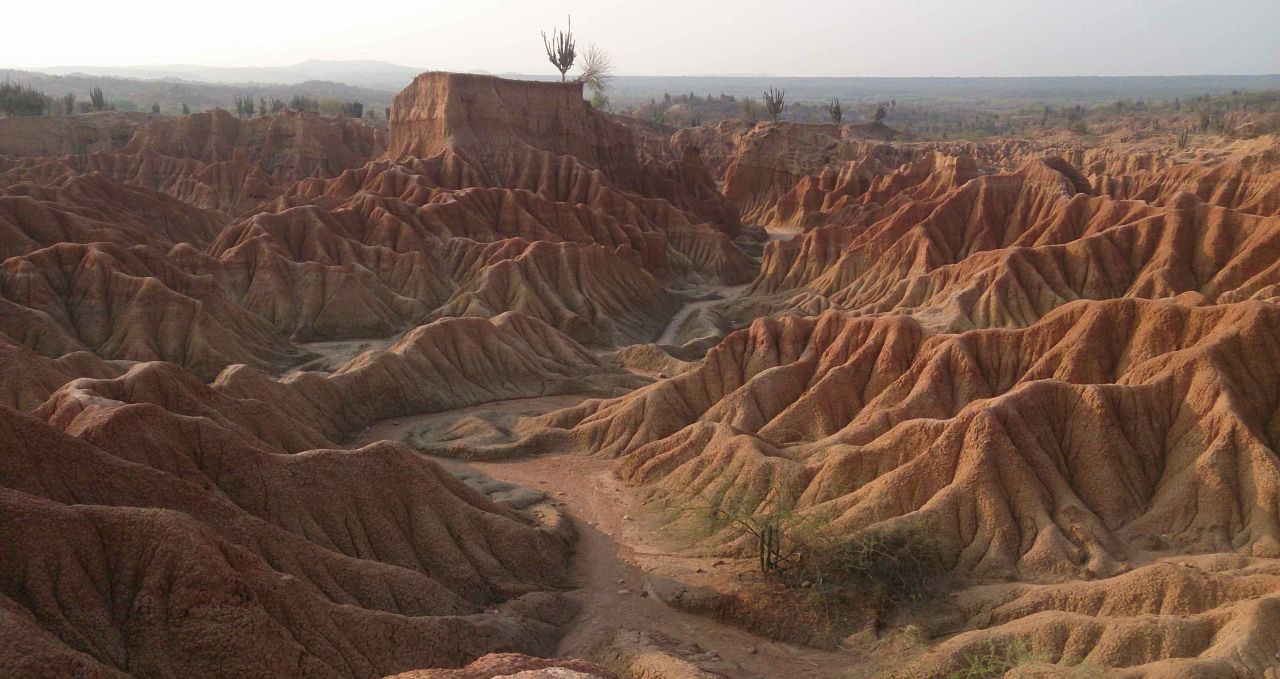
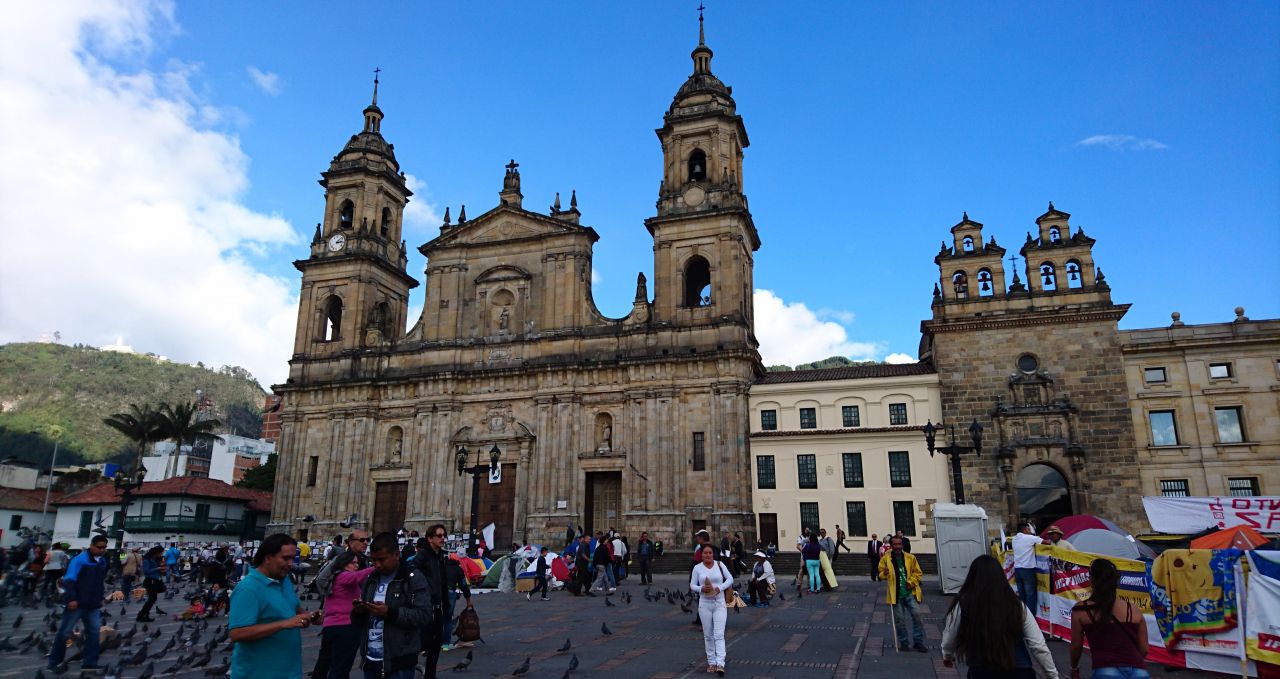
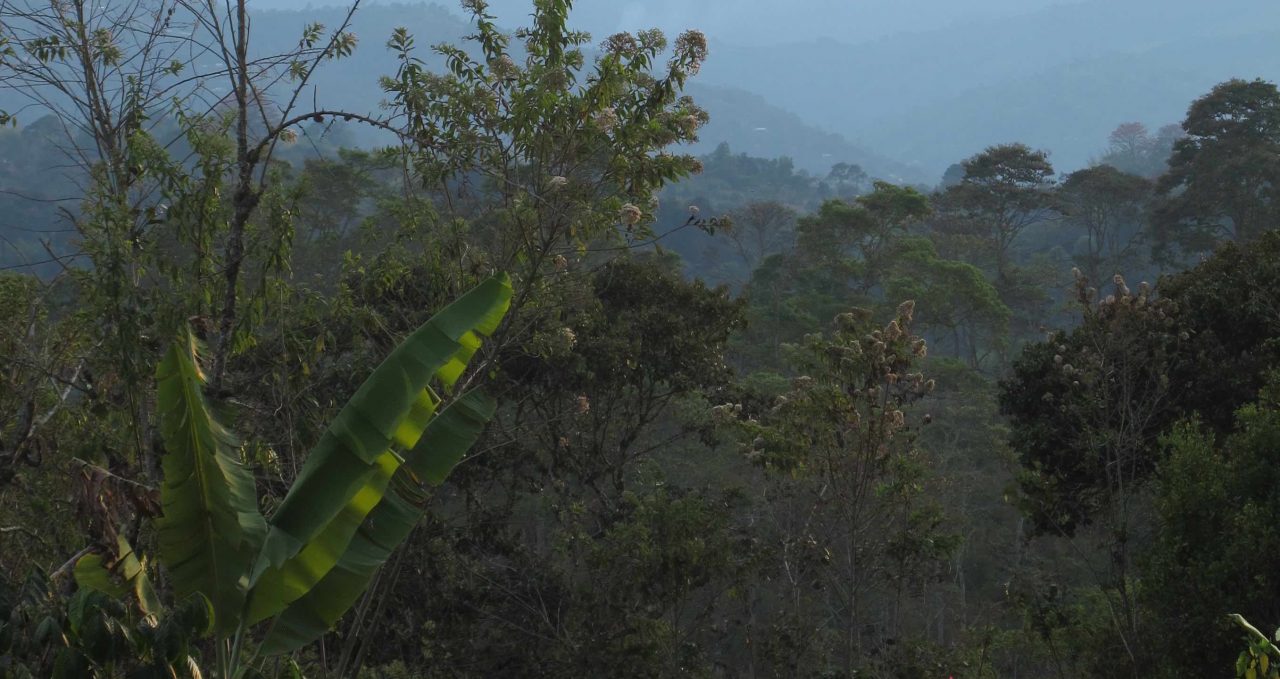
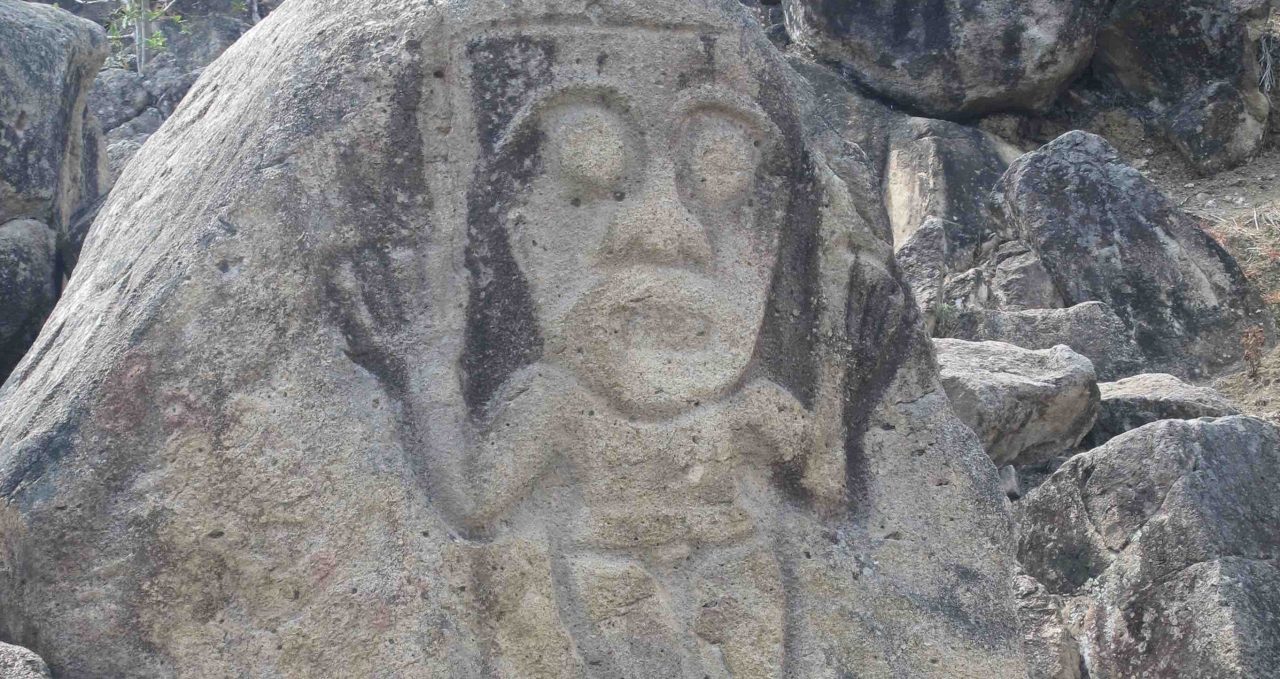
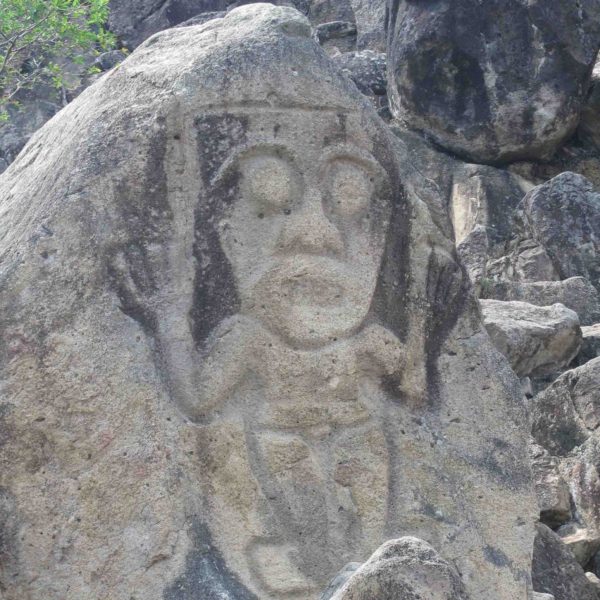
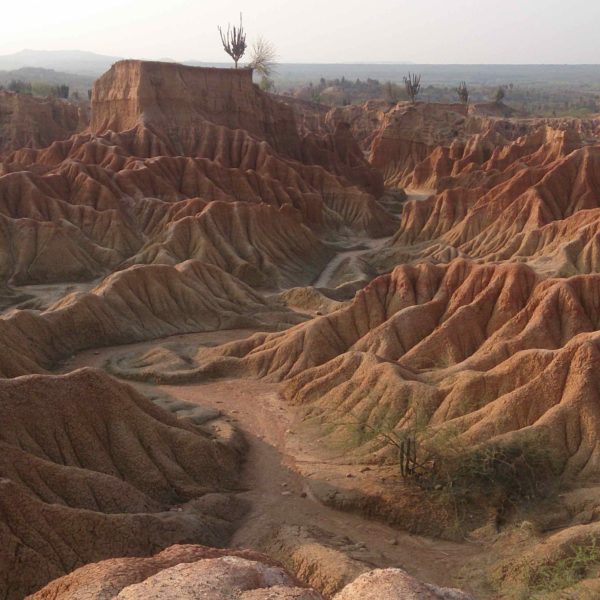
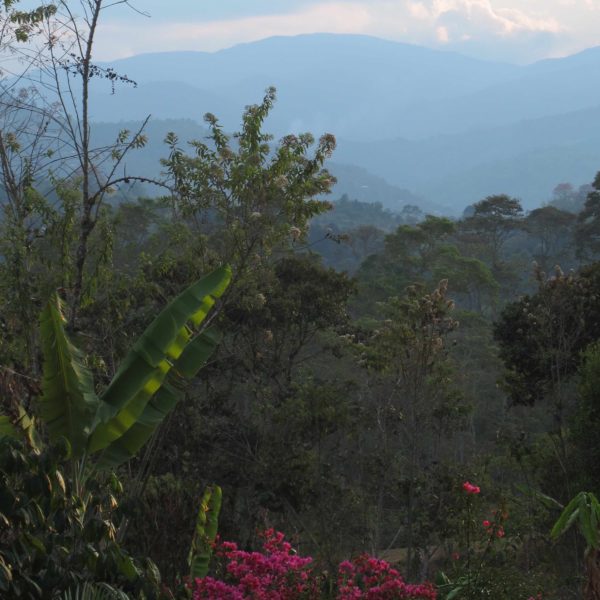
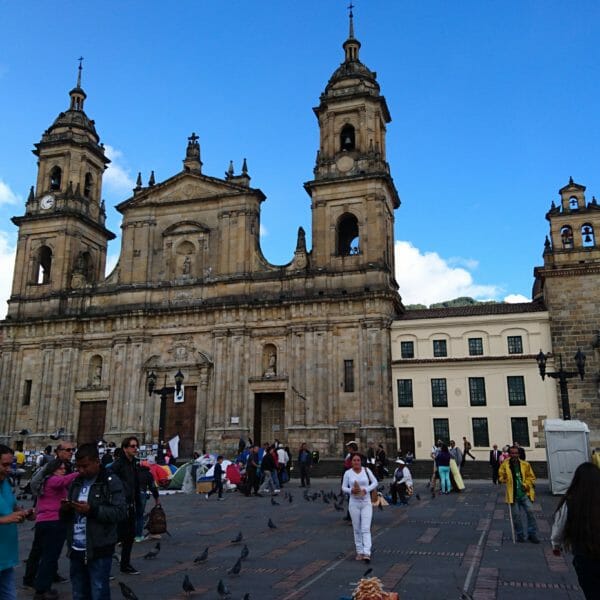
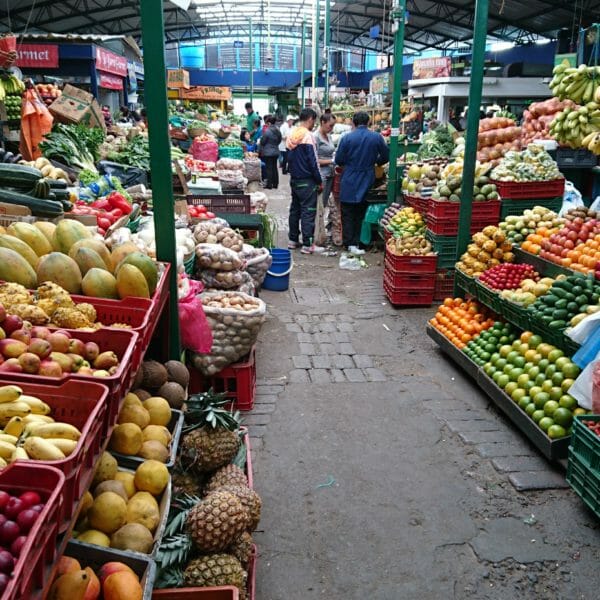
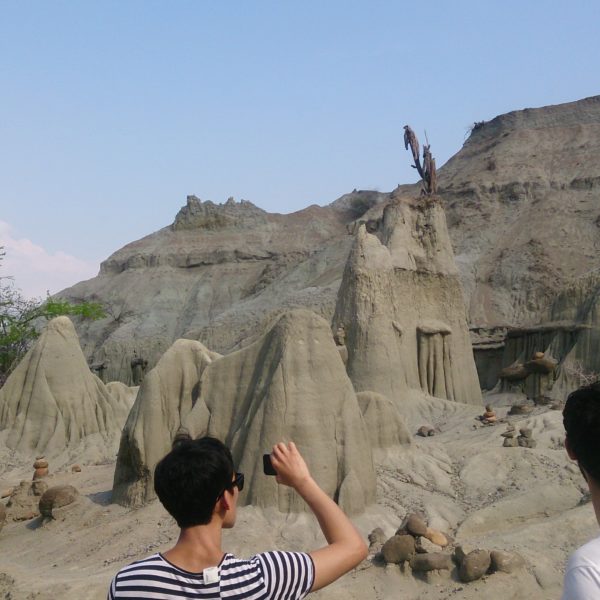
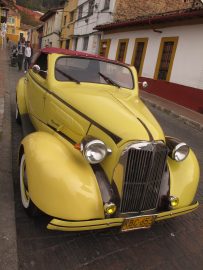
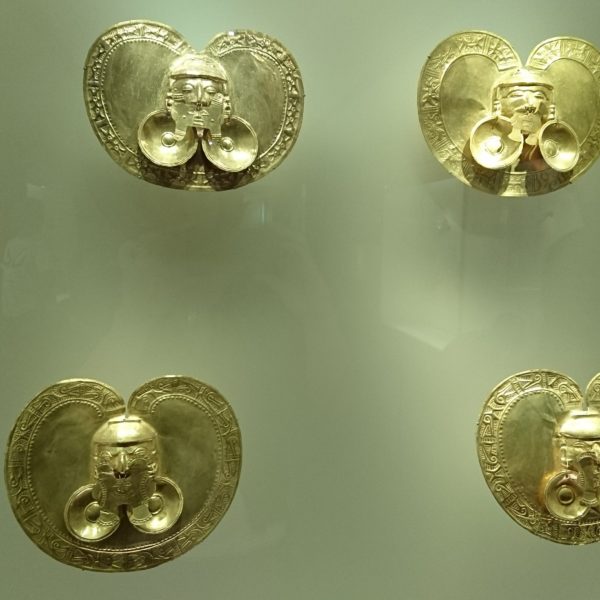
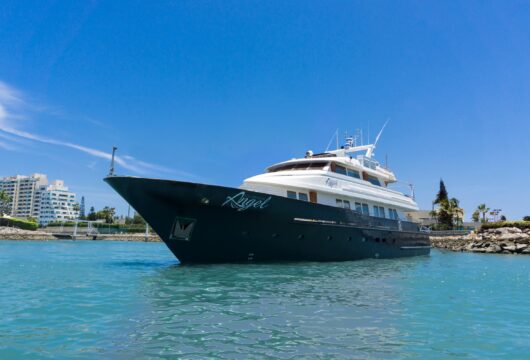
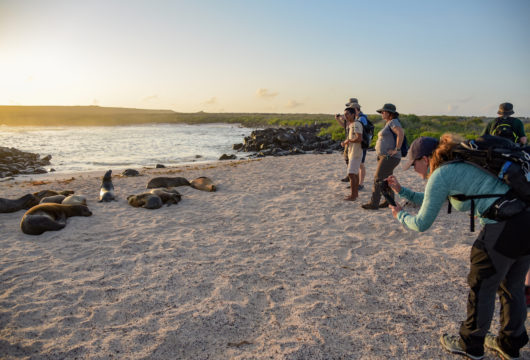
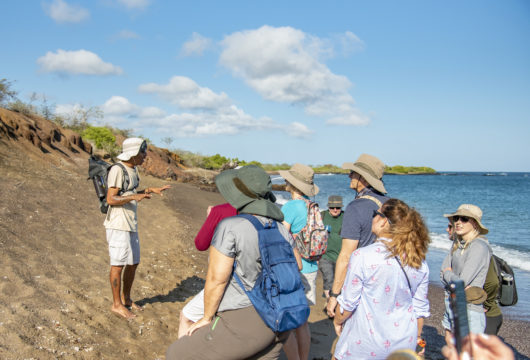
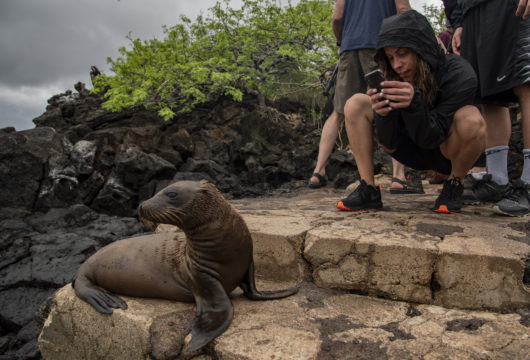
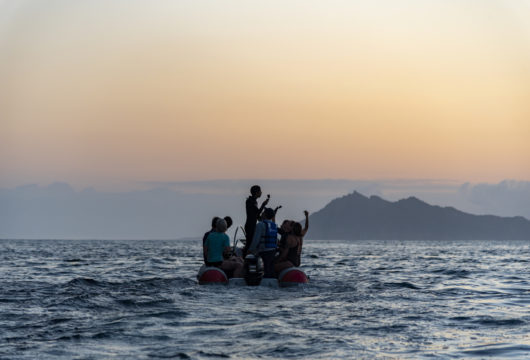
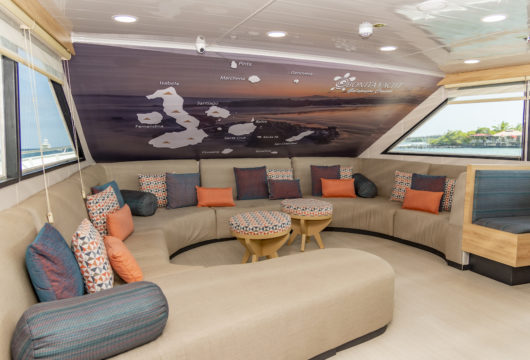
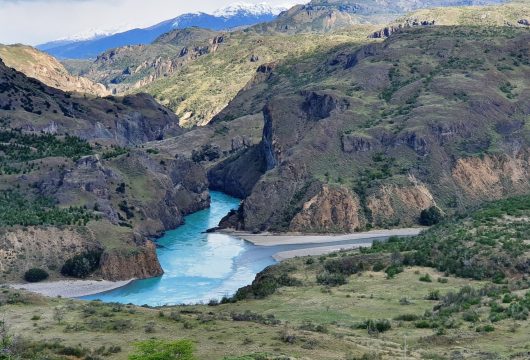
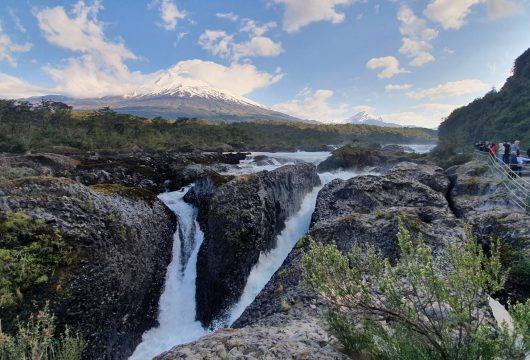
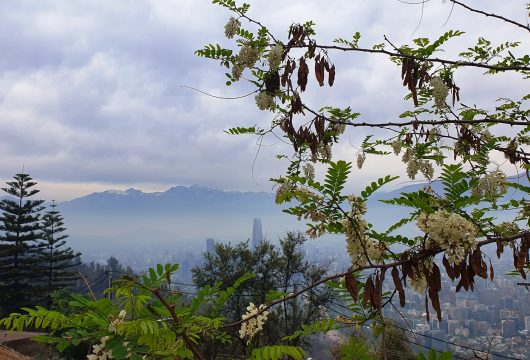
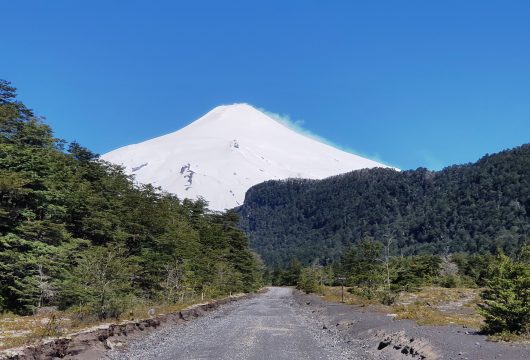
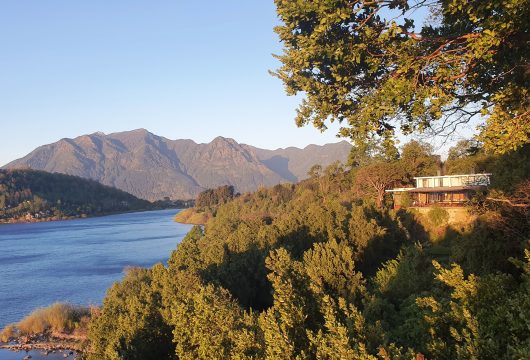
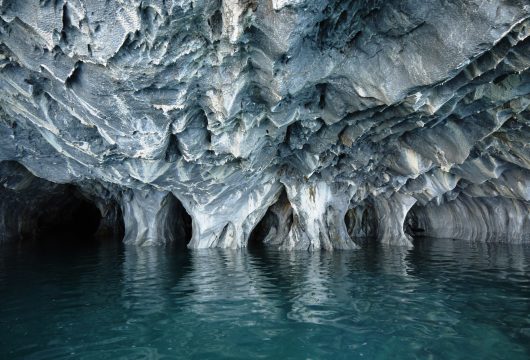
 a Group Tour
a Group Tour
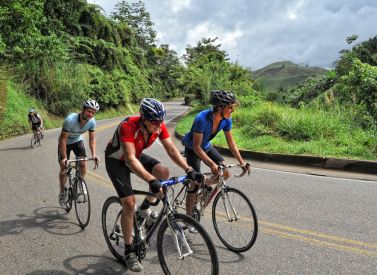
 a Tailor Made Tour
a Tailor Made Tour
